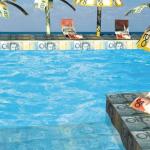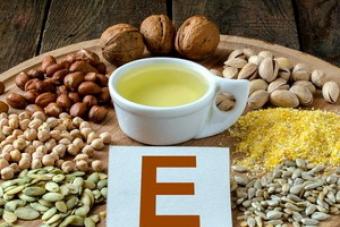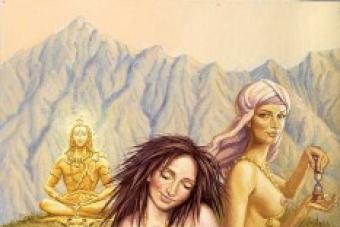The material was prepared by Doctor of Medical Sciences, Associate Professor of the Department of Nervous Diseases of the FPPOV Moscow Medical Academy them. I.M. Sechenov. .
Biochemical changes
Previously, doctors believed that this type of headache was caused by excessive muscle tension, which is why it was given this name. However, it turned out that the mechanism of occurrence of HDN is associated with biochemical changes in the brain. As with migraine, there are disturbances in the regulation of serotonin (for more on this neurotransmitter, see "Pain: event and interpretation"). Interestingly, migraine and TTH appear to be different variants essentially similar changes in the brain. Some people are born with headaches as a response to emotional stress. Some of them have a migraine, others have HDN, and others can have both ailments.
muscle tension
Whatever the role of biochemical changes in the development of HDN, one should not forget about muscle tension. It is important to understand that tense muscles are a source of pain, and therefore you need to learn how to relax them. Where does this pain come from? When the muscle is tense, the vessels are pinched, and blood, and, consequently, oxygen, does not enter this area. When working in hypoxic conditions (in the absence of oxygen), the muscles release toxic metabolic products that irritate the nerves and cause pain (for more on nerves and their role in the development of headaches, see "Pain, nerves and the brain"). When the muscle finally relaxes, the pain does not go away immediately: the accumulated "harmful" substances cannot immediately disappear, on the contrary, at this moment they enter the bloodstream, being absorbed into the previously pinched, and now expanded vessels. The payoff for tension can be long: after a difficult week, the head can hurt throughout the weekend.
Knowing why pain occurs, you can understand what should be done to cope with the disease. Muscles should not be allowed to suffer from a lack of oxygen. Regular aerobic exercises help to expand the vessels in them. If you exercise at least 20 minutes a day, headaches can disappear without a trace.
Tension headache
- Why does headache tension?
There are several reasons why headaches occur, and they are not always associated with general condition health. Often the causes of severe headaches are overexertion, the desire to do several days at a time and even just Bad mood. To eliminate the disease, it is first recommended to try folk remedies for the treatment of headaches, and only then resort to the help of medicines.
What are the types of headaches
Worldwide, millions of people suffer from headaches that range from mild attacks to unbearable pain, usually caused by an increase in intracranial pressure.
Many people wonder why headaches occur in absolutely healthy people? This may be due to weather changes or overwork. Often such pains quickly disappear without the need for medication or after taking pain medications. Others have to be treated long and hard.
Most frequent view headaches - the so-called tension headaches. They occur in otherwise healthy people. The cause of such headaches may be mental overstrain, which is the result of an acute or. Also, the cause of frequent headaches can be long and hard work with papers, long work on the computer. In children and adolescents, headaches may occur during exams or after a few lessons at school. Also, a tension headache can be triggered by a cold wind, hunger, lack of water.
What are headaches and their characteristics:
- Light or moderate – are well tolerated and do not interfere with daily work.
- Headache lasts from 30 minutes to 7 days.
- Headaches are usually located on both sides ( pressing pain in the temples), in the forehead with the transition to the crown and back of the head (headache such as "compressing hoop", "hood" "helmet").
- The headache is usually constant, not throbbing.
- There is no nausea or vomiting associated with the headache, but sensitivity to noise or bright lights is rare.
Migraine- Another type of headache associated with impaired blood supply to the brain. These are very characteristic pains: strong, throbbing, localized in one of the halves of the head. It is also possible the appearance of nausea, vomiting, light and sound fear. Sometimes a headache is preceded by a brief warning period called an aura. There are visual impairments (veil, bright bursts), impaired smell, hearing, speech, coordination of movements. Manifestations of headaches depend on which parts of the brain are more affected by an imbalance in blood circulation. These attacks are periodically repeated and last from several hours to 3 days. They may appear in response to certain types food (individual for each person), or drinking alcohol, or certain smells, as well as a sudden change in weather, physical stress, insomnia, phases of the menstrual cycle.
Why Do Frequent Headaches Happen?
The most common reasons why frequent headaches occur in people whom psychologists combine into " psychological type BUT":
- often does many things at once;
- pushes others, asks to finish the thought as soon as possible;
- very irritated while waiting;
- cannot sit doing nothing;
- speaks very assertively, can use swear words, even obscene ones;
- seeks to win, even if playing with children;
- shows impatience watching others complete his task.
Reasons why severe headaches occur in people of other psychological types:
- Any viral or bacterial infections may start with a headache. The head hurts, as well as with inflammation of the nerves of the teeth (especially in the upper jaw).
- Headache may be caused by oral contraceptives, nitroglycerin, caffeine.
- Headache develops with benzene, carbon monoxide, insecticides, lead.
- Headaches can be the first sign of the development of myopia, age-related farsightedness and increased intraocular pressure.
- Headaches often originate in the cervical spine, usually in one half of the head in the cervical-occipital region and extend to the temporo-orbital region. Pain may appear after sleeping in an uncomfortable position, unusual, being in a draft. It is accompanied by movement restrictions in cervical region spine, stiffness in the muscles of the neck and back, a significant decrease in the volume of voluntary movements in them. Alternative treatment cervical osteochondrosis, just like classical methods, aimed at removing pain syndrome and stop destructive processes in the cartilages of the neck.
Having identified the causes of headaches, it is better to start treatment with folk methods.
Traditional medicine: ways to treat headaches
 Traditional medicine for the treatment of headaches is recommended to take herbs and medicinal fees:
Traditional medicine for the treatment of headaches is recommended to take herbs and medicinal fees:
- 1/2 st. spoons of peppermint herb pour 1 cup of hot boiled water, cover with a lid and heat in a water bath, stirring constantly, for 15 minutes. Cool at room temperature for 45 min. Strain and add boiled water to a volume of 1 cup. Take warm 2/2-1/3 cup 1-3 times a day 15 minutes before meals. Store the infusion in a cool place for no more than 2 days.
- 2 teaspoons of herb lumbago open (sleep-grass, snowdrop) insist for a day in 1 glass of boiled water. Drink the entire portion of the infusion cold during the day.
- Another folk way to treat headaches: 1 st. a spoonful of herbaceous elderberry flowers pour 1 cup boiling water, leave for 30 minutes and strain. Take 50 ml with honey 3-4 times a day 15 minutes before meals.
- 1 st. pour a spoonful of a three-leaf watch leaf with 1 cup of boiling water, leave for 2 hours, strain. Take 1/2 cup 2 times a day 30 minutes before meals.
- 2 tbsp. spoons of viburnum bark pour 2 cups of boiling water, heat in a water bath for 30 minutes, leave for 15 minutes, strain. Take 1 tbsp. spoon 3-4 times a day for attacks.
- Pour 2 g of fresh rhizomes of European hoof with 1 glass of cooled boiled water, leave for 3 hours, strain. Take 1 tbsp. spoon 2 times a day during an attack.
Effective folk remedies for headaches
Here are effective folk ways treatment of headaches occurring with low blood pressure in the premenstrual and menstrual periods.
For migraine with low blood pressure:
Take 1 part of a blackberry leaf, alder buckthorn herb, tansy flowers, motherwort herb, chamomile flowers, cudweed herb. Insist and take 1/2 cup 3-4 times a day.
During the premenstrual and menstrual periods:
Take 2 parts of common raspberry fruit, coltsfoot leaf, 1 part of common oregano herb and heart-shaped linden flowers. Take as an infusion, 1 glass in the morning and evening.
 Alternative methods of treating headaches during the foreshadowing of a migraine attack:
Alternative methods of treating headaches during the foreshadowing of a migraine attack:
- Take 2 parts of heart-shaped linden and common raspberry flowers, 1 part of rhizome with roots of valerian officinalis, white mistletoe herb, horsetail herb. Take in the form of an infusion of 1/2 cup 3 times a day before meals in a warm form.
- Take 1 part of the rhizome with the roots of valerian officinalis, elecampane root, alder buckthorn bark, white mistletoe grass, herbs kidney tea, bearberry leaf. Take in the form of an infusion of 1/2 cup 4 times a day in a warm form.
- Take 3 parts of sage leaves, 2 parts of wormwood herb, 1 part of rhizome with roots of valerian officinalis and horsetail herb. Take as an infusion 1/2 cup 3-4 times a day.
The article has been read 10,567 times.
The situation is the following. The causes of migraine development have long been studied by those who do not have a headache. And - judging by the information that comes to us from them - they are already approaching the disclosure of the mechanisms that trigger migraines. There are questions. When these specialists find out what worries them (and not only them) - then will their head hurt, or will it stop with us? I mean, if the causes and symptoms of migraines were to lose their mysteries, who would feel better?
Understanding imbalance
Formally, the information is - when blood vessels of a person expand (and therefore certain chemical substances), the headache is activated. And triggers are to blame. trigger factors. food, drinks, elements environment... Each person has his own. But the headache is the same for everyone - at least in that the head hurts. Differently. Because of this, there is at least one classification. But my head hurts. Moreover, women suffer from migraines 10 times more often than men. How to be? A well-known cause of migraine is an imbalance of certain hormones. Perhaps because men have one main sex hormone - testosterone. And in women, there are two of them - estrogen and progesterone. Already unbalanced. Accordingly, a malfunction of the adrenal glands (they produce female sex hormones) leads to a violation hormonal balance. Migraine is outraged. The migraine attack starts. Or infections. The blood-brain barrier protects our brain from infections. But it is powerless against neuroinfections. Of course, such neurospecies are rare, but they make your head hurt. Moreover, not abstractly, but concretely. Intensely. Localized in one half of the head. Pulsing. Provoking nausea, vomiting, unimportant tolerance to bright light, photo- and phonophobia, numbness of the limbs, lethargy, drowsiness ... hinting at depression. From 25 to 55 years old. Unpleasant, scary, painful. How to be?
To date, the following reasons are known:
- Flavor enhancers (glutamate).
- Sweeteners (aspartame).
- Tyramine (in cheeses, hot smoked fish, salted herring, yogurt, sour cream…).
- sodium nitrates.
- Chocolate, citrus juices, onions, beans, nuts, fatty foods.
- Alcohol.
- Smoking.
- Coffee and tea.
- Seafood.
- Bright, flashing light
- Strong odors (perfumes, paints, tobacco smoke…).
- Weather (climate change, high humidity…).
- Sleep disorders.
- Irregular meals.
- Head injury.
- Physical exercise.
- Change of life rhythm.
- Changes in hormonal status (menstruation, oral contraception, hormone therapy, pregnancy ...).
It is impossible to clearly define a specific list of causes of the onset and development of migraine. Officially, because it is caused by an individual set of reasons that specialists need to understand.

Consequences - both traditional and in general
In general, the question "how to be?" repeats. So to speak, pulsating. Photophobia and phonophobia (phobia of light and sound) hid somewhere. Increased irritability and sudden mood swings? Well, if you add here a decrease in the level vitality, pungent odors, nausea, vomiting, dizziness, disorientation in space and, of course, pain in a certain part of the head, it is better to say that none of this exists, and cannot be. And then someone will call " ambulance". And she will come. And they will come in. And here we are. How to be?..
A headache, whether it is spontaneous, growing, sharp, aching, throbbing or pressing, occurs in the life of any person, but it rarely happens without a reason. Almost always, it warns of a failure in the body or its susceptibility. harmful factors. Reveal true reason the appearance of headaches is quite difficult, given the large list of diseases and disorders that provoke it, but it is quite possible to do this if you take into account your own feelings and accompanying signs when diagnosing.
Causes of a headache
In most cases, headache is a symptom that signals the impact on the body of adverse factors or the development latent pathology which requires immediate treatment.
TO unfavorable factors, under the influence of which there is a headache, include:
- a sharp change in climate or weather conditions;
- environmental pollution harmful fumes, toxins, carbon monoxide;
- low-quality food products containing high concentration monosodium glutamate and nitrites;
- emotional overwork against the background of frequent stressful situations;
- alcohol abuse and hangover syndrome as a result;
- long exposure to the sun.
Frequent pathological causes headaches are:
- vascular disease circulatory system and development arterial hypertension, hypotension as a consequence;
- liquorodynamic disorders and arising from the development, and other diseases of the membranes of the brain structures;
- neurological diseases, including neuralgia trigeminal nerve, vertebrogenic apparatus, infringement of the nerve processes of the cervical spine;
- injuries of the brain and skull bones, as well as chronic post-traumatic conditions;
- drug poisoning, food products, toxic substances;
- inflammatory processes occurring in the visual and ENT organs;
- diseases of a viral or catarrhal nature, accompanied by high temperature and headache as a consequence.
Any headache that occurs regularly, becomes lingering and is not relieved by painkillers should be alarming.
In this case, it is better to play it safe and see a specialist so as not to lose time and prevent the development of complications if pain caused by a pathological process.
Types of headache
 To identify the cause of the appearance of cephalalgia, you need to determine its type according to the relevant signs. Most often in medical practice Headaches are classified in the following areas:
To identify the cause of the appearance of cephalalgia, you need to determine its type according to the relevant signs. Most often in medical practice Headaches are classified in the following areas:
Headaches caused by vascular diseases
Due to narrowing, expansion, inflammation or rupture of blood vessels, pressure occurs, which is often supplemented by nausea, dizziness and a decrease in the main reflex functions. This type of pain is typical for:
Are you worried about something? Illness or life situation?
- migraine attacks;
- violations blood pressure(hypertension or arterial hypotension);
- temporal arteritis;
- multiple sclerosis;
- atherosclerosis of the spinal vessels;
- strokes.
Psychogenic headaches (tension pains, tension pains)
A compressive and spreading headache of a permanent nature causes a feeling of a hoop squeezing the head, occurs against the background of prolonged physical and psychological stress in persons who are unstable to stress. IN calm state pain is mild or moderate, with bending over, physical activity And nervous shocks its intensity will increase.
Headaches associated with CSF and intracranial pathologies
Painful sensations of a local or spilling nature are disturbing due to a violation of the circulation of the cerebral fluid through the cerebrospinal fluid system, its excessive accumulation in the meninges and the occurrence as a result. The intensity of headaches increases at night and in the morning, painful sensations are often accompanied by nausea, vomiting, decreased vision and hearing. This type of headache is typical for:
- post-traumatic states;
- congenital or acquired pathologies of the brain;
- severe infections of brain structures (encephalitis,).
cluster headaches
Intensive pain unclear etiology, mostly found in men. They arise suddenly, are one-sided. Attacks of different duration occur at regular intervals (day, week, month). The condition is aggravated accompanying symptoms- swelling of the nasopharyngeal mucosa and tearing. .
Headaches not associated with a violation of brain structures
- viral or infectious diseases, in which aching headache occurs due to general intoxication of the body;
- inflammatory processes occurring in the organs of hearing, smell, vision, oral cavity or facial nerves(in this case, the patient feels a shooting or aching headache, radiating to a painful place);
- overdose medical preparations, alcohol abuse;
- caused by traumatic processes, small physical activity and limitation of movement.
If headaches bother you regularly, and the condition is aggravated by symptoms pathological then you should consult a doctor.
 Regardless of the cause and nature of the origin, doctors do not recommend enduring a headache and, with an intense pain syndrome, prescribe painkillers in tablets.
Regardless of the cause and nature of the origin, doctors do not recommend enduring a headache and, with an intense pain syndrome, prescribe painkillers in tablets.
Depending on the type of headache and its cause, you can take one of the following medicines:
- Paracetamol. The safest pain reliever antipyretic drug allowed for pregnant women and children. It relieves moderate headaches caused by colds or infectious diseases, inflammatory processes.
- Migrenol. Combined medicine, in which the action of the main substance of paracetamol is complemented by caffeine. The drug is prescribed for hypotensive patients to relieve pain attacks caused by a decrease in blood pressure, meteorological dependence, VSD, migraine.
- Solpadein. Pain reliever with codeine and caffeine in the composition. These substances enhance the action of the main component of paracetamol, so the drug effectively relieves intense headache attacks.
- Analgin. The analgesic effect of the drug is very pronounced, but its long-term use negatively affects the structure of the blood, reducing the production of leukocytes.
- Ibuprofen. Pain reliever with minimal symptoms side effects treats cephalgia of various etiologies.
- Sedalgin Plus. analgesic, which complementary substances are caffeine and vitamin B1. The drug effectively relieves pain attacks caused by psycho-emotional overwork, hypotension, migraine, colds or chronic fatigue.
- Spazmalgon (Spazgan). Analgesic drug with a pronounced spastic effect. It is prescribed for headaches that have arisen due to vasospasm.
- Brustan. Tableted combined remedy, combining two painkillers that complement each other - paracetamol and ibuprofen. Assign to relieve severe headaches when other drugs do not help.
Painkillers should not be taken constantly, combined with each other and mixed with alcohol. The choice of a specific drug and dosage, depending on the degree of intensity of the pain syndrome and individual tolerance, should be carried out only by a doctor.
Folk remedies
If headache attacks are not intense and short-term in nature, while concomitant pathological symptoms missing, then to remove discomfort you can use simple but effective folk remedies.
- Melissa tea with the addition of chamomile or valerian flowers. The drink dilates blood vessels and relieves spastic headaches.
- Soothing tea with rosemary and mint. Taken to relieve headaches that arose against the background of nervous overwork.
- Inhalation or rubbing with essential oils of grapefruit, lavender, mint, rosemary or lemon balm. One of the oils or a mixture of them in a small amount is applied to the whiskey and gently rubbed. You can also light an aroma lamp, and essential oil to reduce the concentration pre-diluted with water.
- Compress from saline solution per area frontal lobes and temples. For this in warm water(1 l) you need to dissolve Art. spoon sea salt, moisten a cloth in the solution and apply it to the painful area of \u200b\u200bthe head.
- Express method of relieving headaches in summer time are fresh leaves mint, lemon balm or knotweed, which must be applied to the back of the head or temples. In winter, for these purposes, you can use cabbage leaf, which must first be mashed until juice appears.
- Inhalation with a solution of apple cider vinegar for migraine attacks. For this Apple vinegar add to water in equal proportions, bring the resulting composition to a boil, after which, slightly tilting your head over the container, gently inhale its vapors.
Should stop using folk remedies if the cause of the headaches that have arisen is unclear and the patient has pronounced pathological signs. In this case, you should immediately see a doctor and only after setting accurate diagnosis agree with him the expediency of using folk remedies.
The sensitivity of tissue to pain depends on the density of nerve endings on its surface. There are tissues that are completely insensitive to pain. In the head area, there are nerve endings in the skin, subcutaneous tissue, in the muscles and tendon helmet, vessels of the soft integument of the head, periosteum of the skull, meninges, intracranial arteries and veins. When each of these structures is irritated, a headache occurs.
Types of headache
Headaches may be vascular resulting from muscle tension, as a result of increased intracranial pressure, neuralgic, mixed and resulting from dysfunction of pain receptors (nerve endings).
- Vascular
Irritation of vascular receptors occurs with excessive stretching of the arteries, which can occur both with reduced pressure  (expansion of blood vessels and stagnation of blood in them), and with increased (increase in blood volume). Insufficient tone of the veins also causes stagnation of blood in them and irritation of pain receptors.
(expansion of blood vessels and stagnation of blood in them), and with increased (increase in blood volume). Insufficient tone of the veins also causes stagnation of blood in them and irritation of pain receptors.
With arterial hypertension  (increased blood pressure) headache becomes pulsating, patients talk about "knocking in the head."
(increased blood pressure) headache becomes pulsating, patients talk about "knocking in the head."
Arterial hypotension (lowering blood pressure) is characterized by dull pressing and arching pain.
Venous headache occurs when outflow worsens venous blood, expansion and overflow of veins with blood. It is dull, arching and is aggravated by a long stay in a horizontal position. It often appears in the morning and gradually disappears after getting up.
- muscular
Muscular headache occurs when continuous voltage or compression of the muscles of the head. At the same time, a person experiences a feeling of compression or constriction by a bandage of the head, as if a hoop is put on the head. This headache may first occur in the frontal or cervico-occipital region, then it quickly spreads to the whole head, transmitted from muscle to muscle through the tendon, which covers our head like a helmet.
Most often, such pain occurs after emotional stress.  or excessive physical exertion. After rest and relaxation, the headache goes away.
or excessive physical exertion. After rest and relaxation, the headache goes away.
- Liquorodynamic
Liquorodynamic headache occurs when intracranial pressure is disturbed (both with an increase and a decrease). At the same time, an increase in intracranial pressure occurs in separate areas, causing tension there. meninges, vessels and nerves inside the skull. At the same time, the headache is bursting, patients experience pressure “from the depths of the brain”. It happens with such serious illnesses, as tumors, abscesses (abscesses limited to the capsule), brain injuries, meningitis, etc.
Decreased intracranial pressure may occur after extraction cerebrospinal fluid. The headache is aggravated by standing.
- neuralgic headache
Neuralgic pain has a number characteristic features, which in most cases can be easily distinguished from headaches of other types. The first sign of this pain is that the attack lasts for several seconds or minutes, but the attacks follow one after another at short intervals, causing the patient to suffer excruciatingly for hours and days. The second sign of neuralgic pain is the existence of special zones (trigger or starting ones), the irritation of which provokes an attack. Even just touching such an area can cause a headache attack. The third sign is that pain radiates to neighboring or distant areas. The pain is usually sharp, penetrating, sharp, "like a blow electric shock". At the moment of pain, the patient freezes, he is afraid to even open his mouth and blink once again.
- Mixed headache
Sometimes during an attack, one type of pain is joined by another. For example, to vascular pain muscle joins. Mixed headache occurs, for example, with meningitis, when there is a violation of liquorodynamics, swelling of the membranes of the brain, increased intracranial pressure and other mechanisms of pain.
- Psychogenic headache
Sometimes headache occurs without any visible reasons. Such pain is called psychalgia or hypochondriacal headache. Obviously, such a headache appears as a result of a violation of the functions of pain receptors in the head. Most often this occurs in the background of a violation





